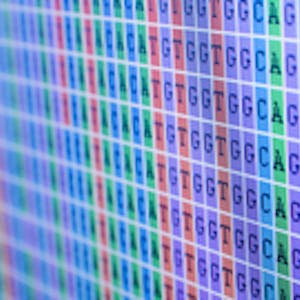Large-scale biology projects such as the sequencing of the human genome and gene expression surveys using RNA-seq, microarrays and other technologies have created a wealth of data for biologists. However, the challenge facing scientists is analyzing and even accessing these data to extract useful information pertaining to the system being studied. This course focuses on employing existing bioinformatic resources – mainly web-based programs and databases – to access the wealth of data to answer questions relevant to the average biologist, and is highly hands-on. Topics covered include multiple sequence alignments, phylogenetics, gene expression data analysis, and protein interaction networks, in two separate parts.
The first part, Bioinformatic Methods I, dealt with databases, Blast, multiple sequence alignments, phylogenetics, selection analysis and metagenomics.
This, the second part, Bioinformatic Methods II, will cover motif searching, protein-protein interactions, structural bioinformatics, gene expression data analysis, and cis-element predictions.
This pair of courses is useful to any student considering graduate school in the biological sciences, as well as students considering molecular medicine.
These courses are based on one taught at the University of Toronto to upper-level undergraduates who have some understanding of basic molecular biology. If you’re not familiar with this, something like https://learn.saylor.org/course/bio101
might be helpful. No programming is required for this course although some command line work (though within a web browser) occurs in the 5th module.
Bioinformatic Methods II is regularly updated, and was last updated for February 2022.
None
Syllabus
Syllabus - What you will learn from this course
Week 1
Protein Motifs
Week 2
Protein-Protein Interactions
Week 3
Protein Structure
Week 4
Review: Protein Motifs, Protein-Protein Interactions, and Protein Structure
Week 5
Gene Expression Analysis I
Week 6
Gene Expression Analysis II
Week 7
Cis Regulatory Systems
Week 8
Review: Gene Expression Analysis and Cis Regulatory Systems + Final Assignment
FAQ
When will I have access to the lectures and assignments?
Access to lectures and assignments depends on your type of enrollment. If you take a course in audit mode, you will be able to see most course materials for free. To access graded assignments and to earn a Certificate, you will need to purchase the Certificate experience, during or after your audit. If you don't see the audit option:
The course may not offer an audit option. You can try a Free Trial instead, or apply for Financial Aid.
The course may offer 'Full Course, No Certificate' instead. This option lets you see all course materials, submit required assessments, and get a final grade. This also means that you will not be able to purchase a Certificate experience.
What will I get if I subscribe to this Specialization?
When you enroll in the course, you get access to all of the courses in the Specialization, and you earn a certificate when you complete the work. Your electronic Certificate will be added to your Accomplishments page - from there, you can print your Certificate or add it to your LinkedIn profile. If you only want to read and view the course content, you can audit the course for free.
Is financial aid available?
Yes. In select learning programs, you can apply for financial aid or a scholarship if you can’t afford the enrollment fee. If fin aid or scholarship is available for your learning program selection, you’ll find a link to apply on the description page.
Reviews
I really appreciate these series of courses, I want to thank Prof. Provart and his coligues for their great job on preparing and presenting these series. Thanks a lot!
Excellent course! The professor was great and very responsive to the forums on the course.
Great way of teaching. Step by step procedure followed in this course enable the learners to grasp quickly and efficiently. Thank you
The course was great. I have developed and learnt so much that can be applied to my thesis. i especially love the hands on lab.
